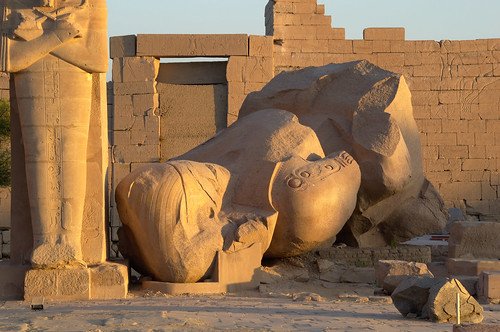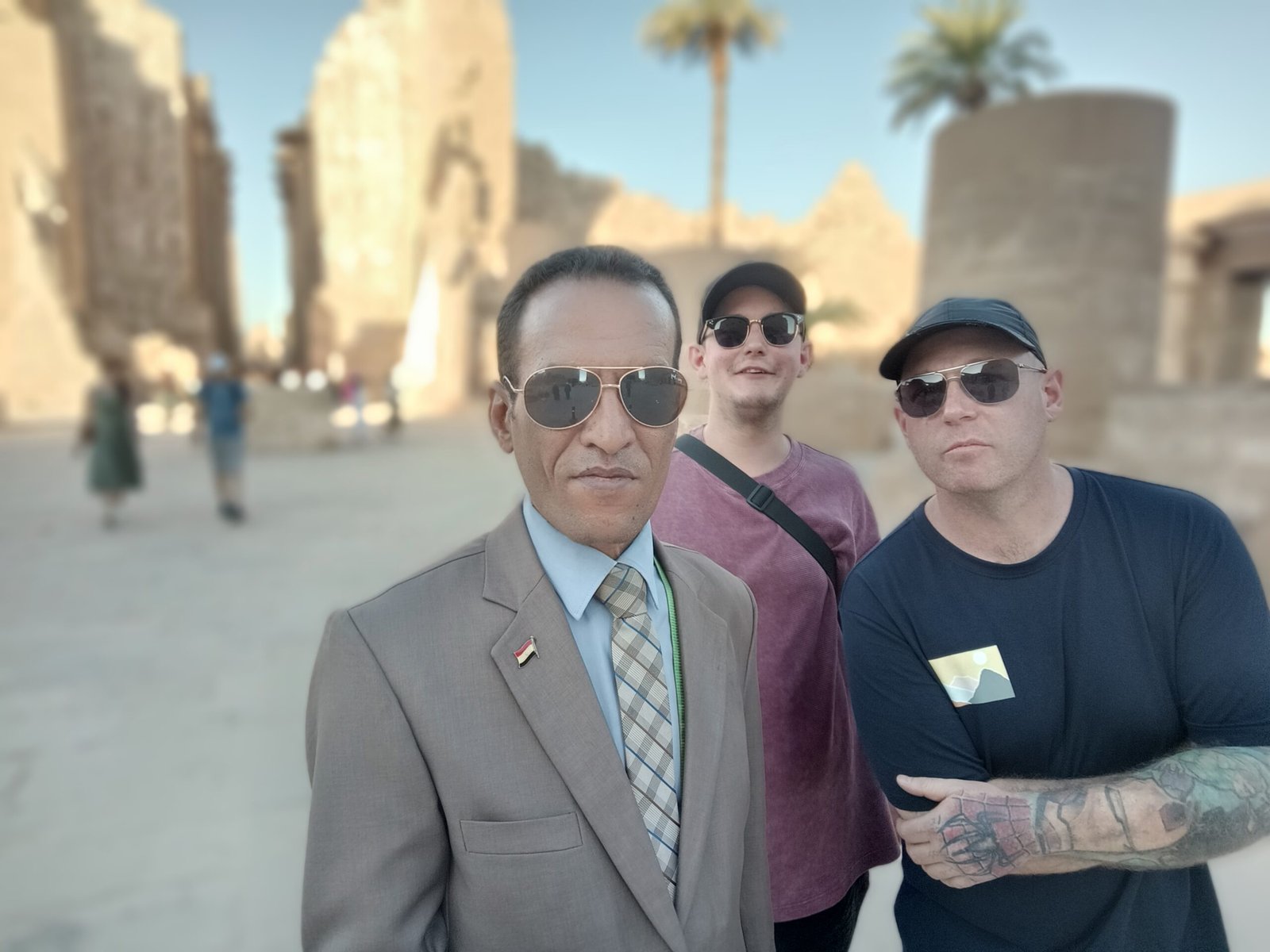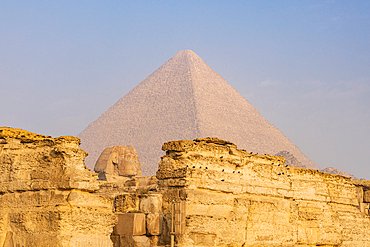
Cosmetic Vessel for unguent This cosmetic vessel would have been used to store scented oils, unguents, or ointments. In ancient Egypt, such vessels were highly prized for their function in both personal hygiene and religious rituals. They often held oils used for perfumes, hair care, and skin care, essential in a society that placed high...

King Ramses II (c.1279-1213 BC), the most famous king of ancient Egypt (who fought a battle against the Hittites), built the Ramesseum Temple, a funerary temple built of sandstone, the temple served as a model for future temples built by different kings. It consists of the first pylon, which is a large building facing four...

The Temple of Khonsu, nestled in the southwestern corner of the Karnak temple complex in Luxor, dedicated to the moon god Khonsu, a significant deity in ancient Egyptian mythology. Construction began under the reign of King Rameses III on the ruins of an earlier temple from the 18th Dynasty. Over time, the temple was enhanced,...

Edfu Temple is one of the most striking and complete of ancient Egyptian temples and is dedicated to the worship of the god Horus. Situated on the western bank of the Nile, its construction began during the reign of Ptolemy III (246–221 BC) in 237 BC, but was completed in the reign of Ptolemy XII...

Egypt’s rich history reverberates through its modern-day culture. There’s plenty to do that will engage all your senses, from majestic ancient sights to lively streets rife with aromatic foods, and the vibrant and eclectic nightlife. To fully indulge in all the excitement, there are some things you should consider, including the country’s cultural traditions. But...

Iteti Ankhires Iteti Ankhires Dating from the Old Kingdom and found within his Saqqara Mastaba, this seated Ka statue of Iteti Ankhires is inscribed with the title of, “The Great One of the Tens of Upper Egypt”. A ka statue is a type of ancient Egyptian statue intended to provide a resting place for the...

Nude figure of the Seal Bearer Tjetji Tjetji is shown in the classic pose of a standing official, with his left leg advanced, a long staff in his left hand, and a sekhem scepter (now lost) held horizontally in his right hand. The arms of this statue were made separately and pegged to the body,...

The Great Pyramids at Giza, Egypt (photo: KennyOMG, CC BY-SA 4.0) One of the Seven Wonders of the Ancient World The last remaining of the Seven Wonders of the ancient world, the great pyramids of Giza, are perhaps the most famous and discussed structures in history. These massive monuments were unsurpassed in height for thousands of...

The Rosetta Stone The Rosetta Stone, 196 B.C.E., Ptolemaic Period, 112.3 x 75.7 x 28.4 cm, Egypt (British Museum, London) (photo: Steven Zucker, CC BY-NC-SA 2.0). The Rosetta Stone was discovered in Egypt, at Fort St Julien in el-Rashid, known as Rosetta. The key to translating hieroglyphics The Rosetta Stone is one of the most important...








